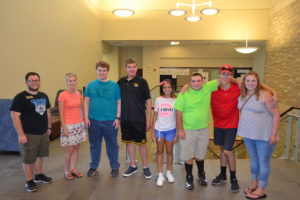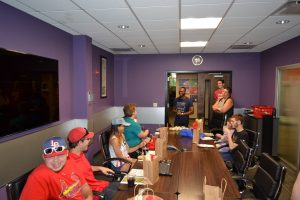For the second summer in a row, through partnership with the Missouri Division of Vocational Rehabilitation (VR), the Life & Work Connections program provided pre-employment transition services to high school students who see work in their futures. The program called “Work It!” combines classroom learning with community outings. This provides participants with an early start at job preparation and exploration, as well as information about educational opportunities after high school.

This summer, eight high school students participated in the program. Funding for the Work It! experience comes primarily from Division of Vocational Rehabilitation. Participants between ages 16-21 are in the eligible VR target group. This year seven of the eight participants fall into that group.
In keeping with VR’s expectations, instructors Mary Breight and Sarah Branch cover five pre-employment transition service activities, including:
- Job Exploration Counseling
- Work-based Learning Experiences
- Counseling for Post-Secondary Education
- Workplace Readiness Training
- Instruction in Self-advocacy/Peer Mentoring
VR’s stated intent is to “assist students with disabilities in making the transition from secondary to post-secondary education/training and competitive, integrated employment.”

“The Teens in Transition students have been eager to learn about topics such as communication, problem solving, and teamwork in relation to the workplace,” says Mary. “They have exemplified these concepts in their interactions with each other which has been fantastic to observe. The class has gone on tours and learned about available jobs at Veterans United, Sam’s Club, Hy-Vee, and the VA Hospital.”
“It has been great seeing the students investigate career opportunities in Columbia they may not have known existed,” says Sarah. “After learning the curriculum, visiting employers, and discovering post-secondary options, each student now has the foundation for planning what happens after high school.”
The long range aim of the partnership is to increase competitive community employment outcomes for people with disabilities. By exposing youth to potential opportunities while they are still in school, evidence shows they are more likely to achieve their vocational goals after graduation.